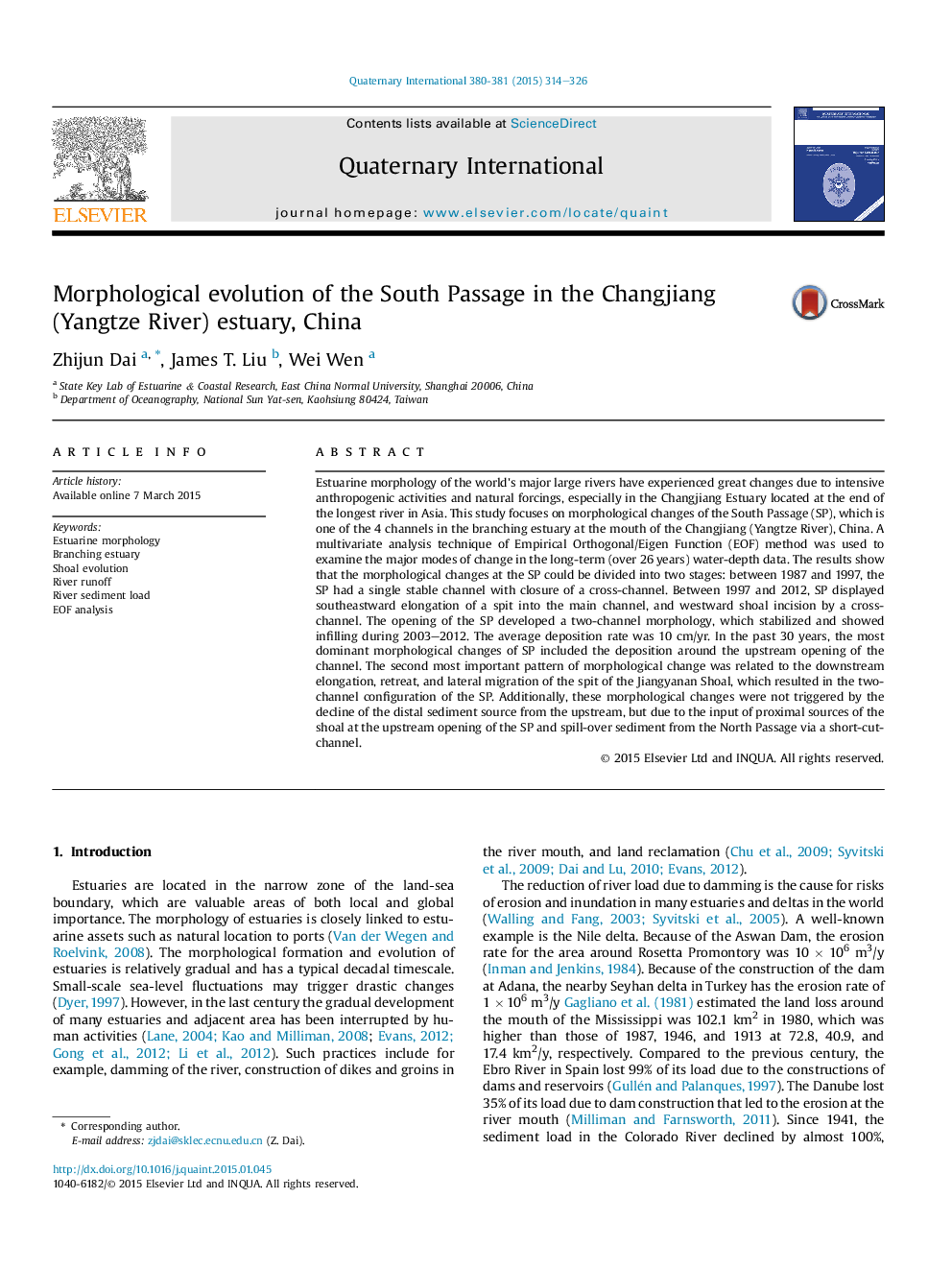| Article ID | Journal | Published Year | Pages | File Type |
|---|---|---|---|---|
| 7451578 | Quaternary International | 2015 | 13 Pages |
Abstract
Estuarine morphology of the world's major large rivers have experienced great changes due to intensive anthropogenic activities and natural forcings, especially in the Changjiang Estuary located at the end of the longest river in Asia. This study focuses on morphological changes of the South Passage (SP), which is one of the 4 channels in the branching estuary at the mouth of the Changjiang (Yangtze River), China. A multivariate analysis technique of Empirical Orthogonal/Eigen Function (EOF) method was used to examine the major modes of change in the long-term (over 26 years) water-depth data. The results show that the morphological changes at the SP could be divided into two stages: between 1987 and 1997, the SP had a single stable channel with closure of a cross-channel. Between 1997 and 2012, SP displayed southeastward elongation of a spit into the main channel, and westward shoal incision by a cross-channel. The opening of the SP developed a two-channel morphology, which stabilized and showed infilling during 2003-2012. The average deposition rate was 10Â cm/yr. In the past 30 years, the most dominant morphological changes of SP included the deposition around the upstream opening of the channel. The second most important pattern of morphological change was related to the downstream elongation, retreat, and lateral migration of the spit of the Jiangyanan Shoal, which resulted in the two-channel configuration of the SP. Additionally, these morphological changes were not triggered by the decline of the distal sediment source from the upstream, but due to the input of proximal sources of the shoal at the upstream opening of the SP and spill-over sediment from the North Passage via a short-cut-channel.
Related Topics
Physical Sciences and Engineering
Earth and Planetary Sciences
Geology
Authors
Zhijun Dai, James T. Liu, Wei Wen,
